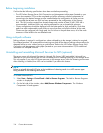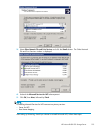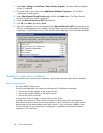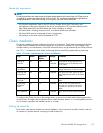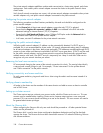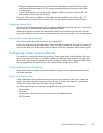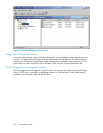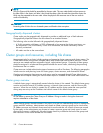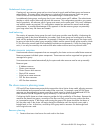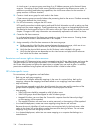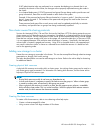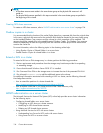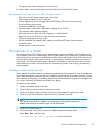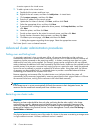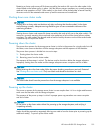
NOTE:
Only the Quorum disk should be accessible by the new node. The new node should not have access to
the other LUNs in the cluster until after it has joined the cluster. After the node has joined the clu ster, the
LUNsmaybepresentedtothenewnode. Movethephysicaldiskresourcesovertothenewnodeto
confirm functionality.
CAUTION:
Presenting other LUN s to the non-clustered system could lead to data corruption.
Geographically dispersed clusters
Cluster nodes can be geographically dispersed to provide a n additional layer of fault tolerance.
Geographically dispersed clusters are also referred to as stretched clusters.
The following rules must be followed with geographically dispersed clusters:
• A VLAN connection with latency of 500 milliseconds or less ensures that cluster consistency can
be maintained. If the VLAN latency is over 500 milliseconds, the cluster consistency cannot
be easily maintained.
• All nodes must be on the same subnet.
Cluster groups and resources, including file shares
Management tasks for a cluster include creating and managing cluster resources and cluster groups. The
Cluster Administrator tool provides complete online help for all cluster administration activities. Cluster
resources are created and then assigned to logical, organizational groups. Ownership of these groups
should be a
ssigned in a balanced arrangement between the server nodes, distributing the processing
load between the two nodes.
Cluster resources include administrative types of resources as well as file shares. The following paragraphs
include overview and planning issues for cluster groups, cluster resources, and clustered fi le shares.
Creating a
nd managing these resources and groups must be managed through Cluster Administrator.
Complete o
nline help for creating the various cluster objects is available in the Cluster Administrator tool.
Cluster group overview
A default cluster group is automatically created when the cluster is first created. This default cluster group
contains an Internet Protocol (IP) Address resource, a Network Name resource, and the Quorum disk
resource. When the new cluster is created, the (IP) address and the cluster name that were specified
during setup are set up as the IP address and network name of this default cluster group.
CAUTION:
Do not delete or rename the Cluster Group or IP Address. Doing so results in losing the cluster and
requires reinstallation of the cluster.
When creating groups, the administrator’s first p riority is to gain an understanding of how to manage the
groups and their resources. Administrators may choose to create a resource group and a virtual server
(IP Address resource and Network Name resource) for each node that will contain all resources owned
by that node, or the administrator may choose to create a resource group and virtual server for each
physical disk resource. Additionally, the administrator should try to balance the load of the groups and
their resources on the cluster bet ween the two no des.
132
Cluster administration



